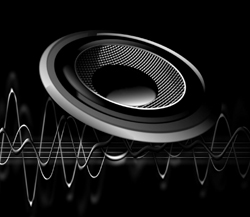Hi,
I'm new in Audio but I have some technical background, altough my master in physics was 18 years ago - so I've forgotten a lot.
I'm interested in increasing the damping of a Midwoofer speaker-driver by modifying the driver itself and the crossover. So that the crossover destroys some of the energy (counter electro magentic force = cemf) that comes from the speaker coil movement. Why damping: because I want a very precise speaker-driver. I know there's a lot of potential because I know a company, who does exactly this and makes incredible good speakers. This company has no patents, so I think, it's a technique from the past.
As I understood: the perfect electric damping would be: if a signal comes from an amp, the coildeflection of the driver follows linearly the voltage of the Amp. If the signal from the amp "stops" (sharp transient) best would be, to have a short circuit over the driver-coil, so no voltage is there anymore, and the coil movement immediately stops. This would happen if the amp would have an output resistance=0, but we all know that's not the case. So any idea how it is possible to increase the electrical damping?
I've found this patent, but I don't understand how it works. Perhaps someone of you can explain me:
Please post also other links and ideas if you have.
would be great!
Tom
I'm new in Audio but I have some technical background, altough my master in physics was 18 years ago - so I've forgotten a lot.
I'm interested in increasing the damping of a Midwoofer speaker-driver by modifying the driver itself and the crossover. So that the crossover destroys some of the energy (counter electro magentic force = cemf) that comes from the speaker coil movement. Why damping: because I want a very precise speaker-driver. I know there's a lot of potential because I know a company, who does exactly this and makes incredible good speakers. This company has no patents, so I think, it's a technique from the past.
As I understood: the perfect electric damping would be: if a signal comes from an amp, the coildeflection of the driver follows linearly the voltage of the Amp. If the signal from the amp "stops" (sharp transient) best would be, to have a short circuit over the driver-coil, so no voltage is there anymore, and the coil movement immediately stops. This would happen if the amp would have an output resistance=0, but we all know that's not the case. So any idea how it is possible to increase the electrical damping?
I've found this patent, but I don't understand how it works. Perhaps someone of you can explain me:
US5373563A - Self damping speaker matching device - Google Patents
A damping circuit for speaker systems of the type containing at least one speaker having a speaker coil with an input and an output connection and having a matching coil adapted to be connected in series with the input connection of the speaker coil and a damping coil adapted to be connected in...
patents.google.com
Please post also other links and ideas if you have.
would be great!
Tom


